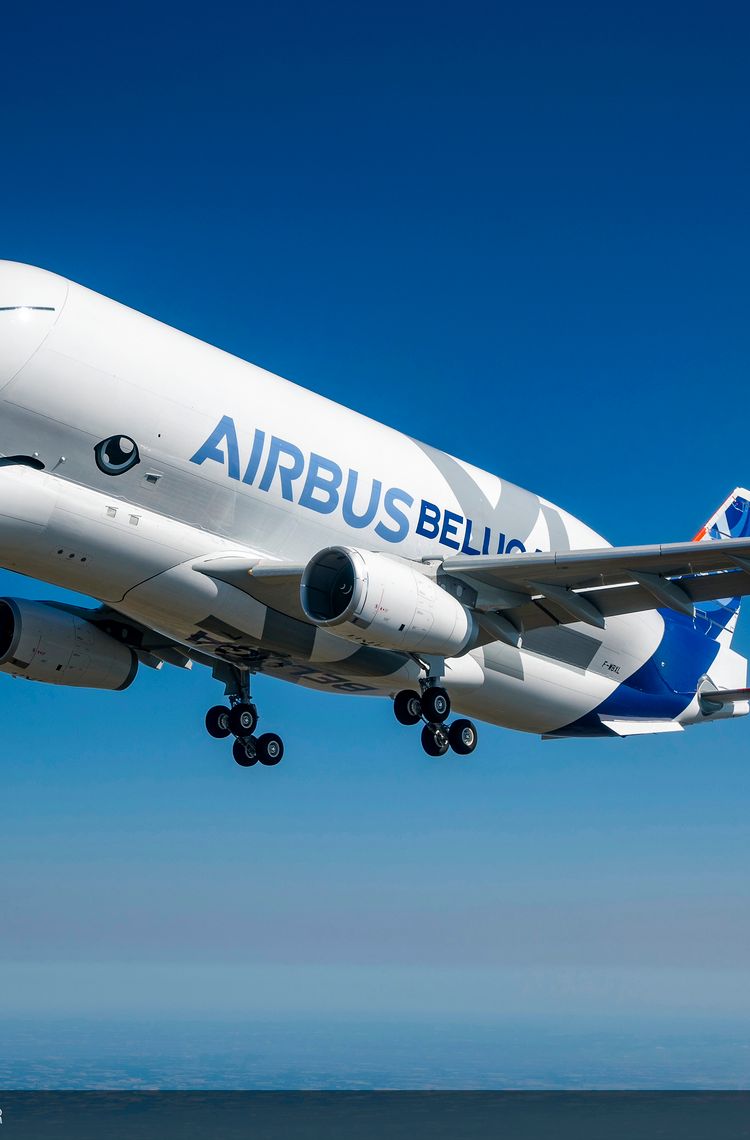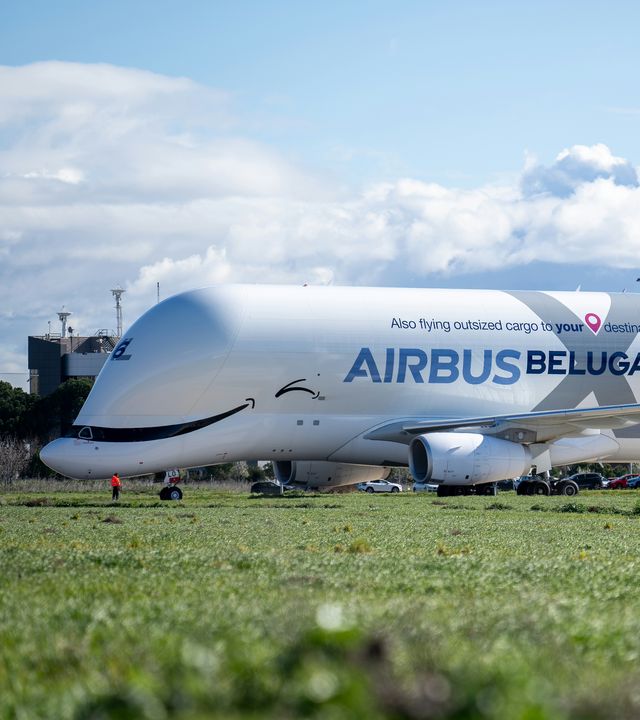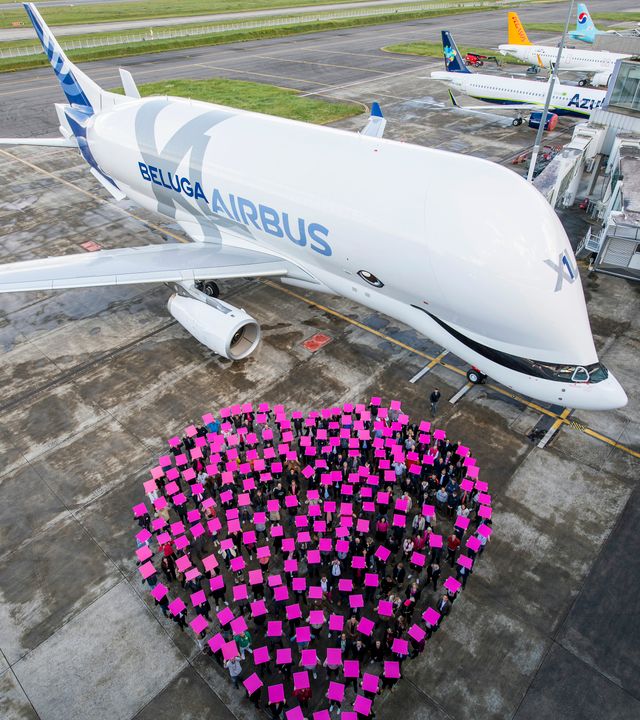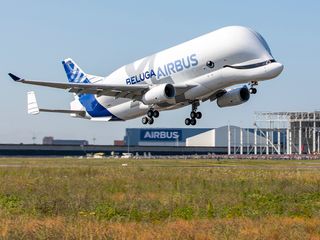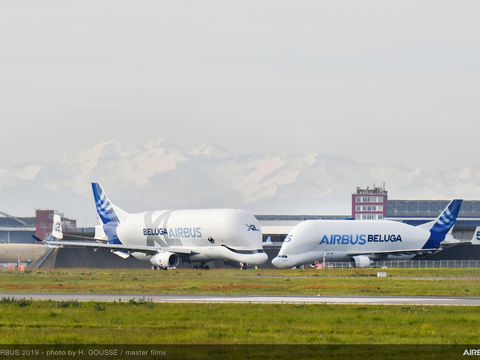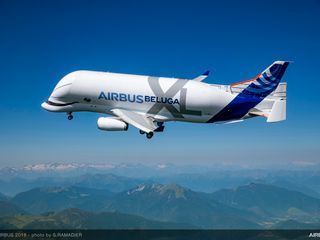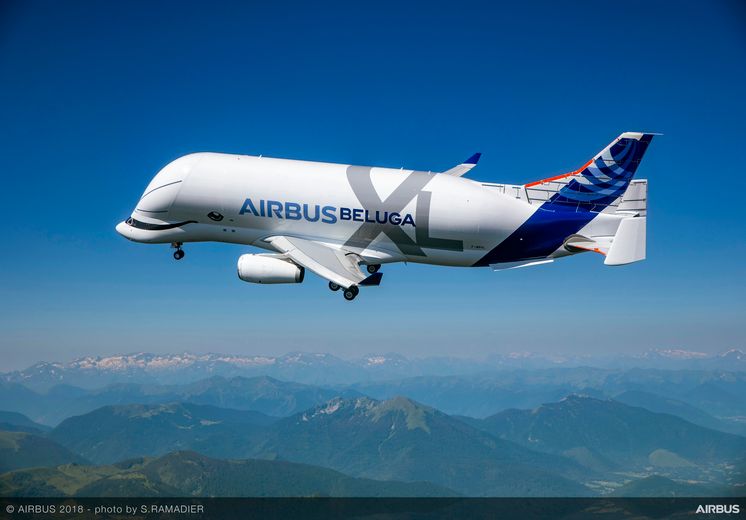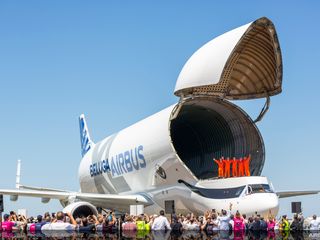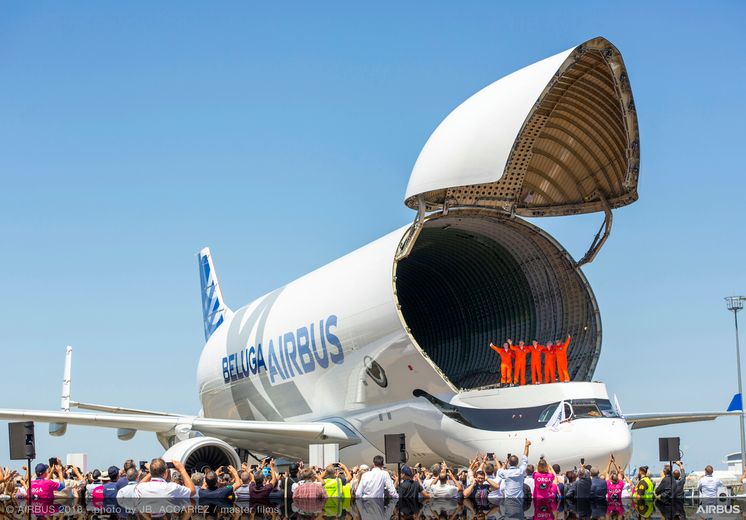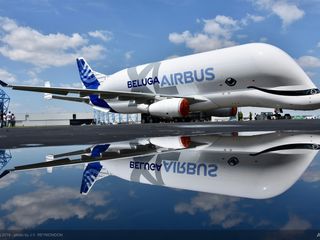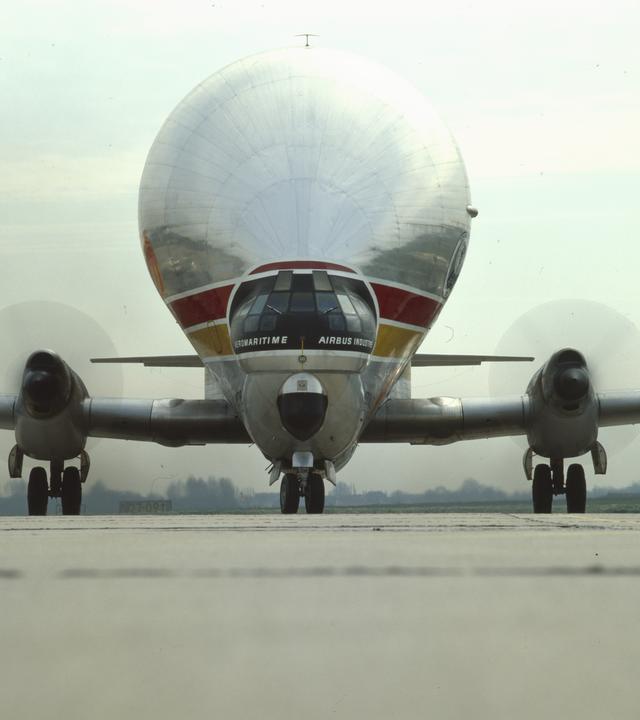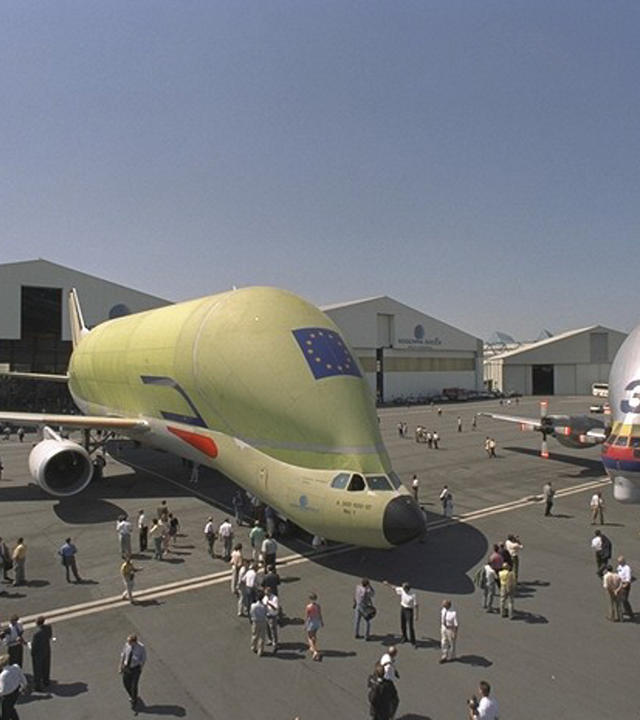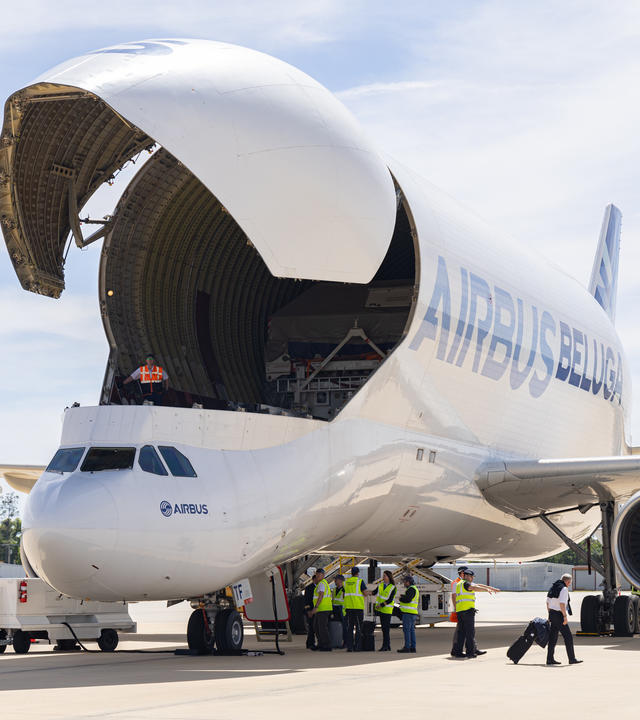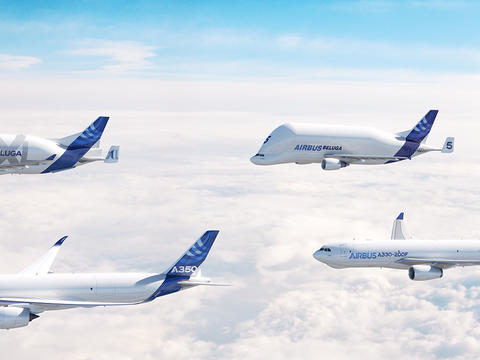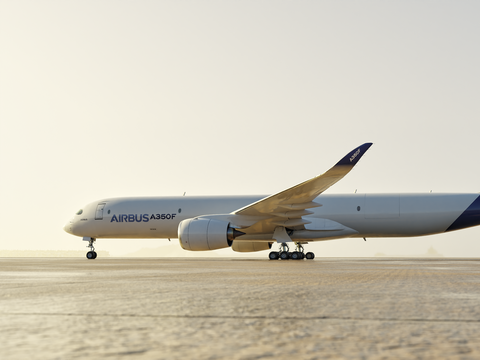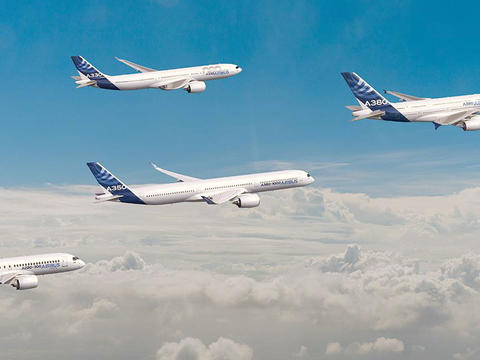An iconic aircraft for oversized cargo
Instantly recognisable by its remarkable whale-like shape, the Airbus Beluga is one of the world's most unique cargo aircraft. This Super Transporter, known globally as the Beluga plane, plays a vital role in keeping Airbus production running. Able to carry extremely outsize cargo like entire aircraft sections, the Beluga provides the logistics backbone between our production sites across Europe. With a range of 1,650-4,000 km, their enormous size enables the transport of aircraft components, ensuring the Airbus commercial aircraft production and assembly network operating at full capacity. Discover the story and capabilities of these unique Beluga aircraft.


BelugaXL: the new-generation airlifter
Outsize cargo specialist
Derived from the versatile A330-200, the BelugaXL offers increased capacity vs predecessor, allowing it to carry two 30-metre wings simultaneously – a feat that showcases its immense size and efficiency for Airbus' production. The six-member Airbus BelugaXL fleet efficiently transports outsized aircraft components to support Airbus' accelerating production ramp-up.
The BelugaXL incorporates a lowered cockpit, an enlarged cargo bay structure, modified rear and tail section, and cargo loading systems to ensure efficient handling of payloads. The specially-commissioned airlifters, assembled by Airbus in Toulouse, France, ferry sub-assemblies and components between 11 destinations around Europe. The BelugaXL provides 30% extra transport capacity compared to the BelugaST.
The Beluga around the world
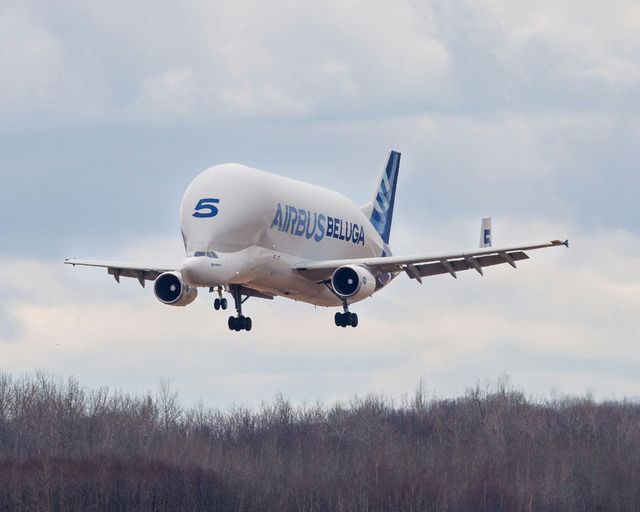

BelugaST: the original Airbus airlifter
The original airlifter
For over two decades, the BelugaST, also known as the A300-600ST Super Transporter, played a central role in connecting Airbus’ European production and assembly facilities for over 20 years. While now succeeded by the XL for internal tasks, its reliability and unique capabilities paved the way for our modern Super Transporter fleet. With one of the largest cargo holds of any civil or military aircraft flying today, the Airbus BelugaST has been ideally suited to transporting oversized payloads.
Airbus Beluga FAQs
FAQs
What is the Airbus Beluga?
The Airbus A300-600ST (Super Transporter), nicknamed the Beluga for its whale-like shape, is a unique and oversized cargo aircraft specifically designed to transport large aircraft components. The aircraft was designed to meet the logistical challenges of transporting massive components between Airbus production facilities across Europe.
Why is it called the 'Beluga' and why does it have that unique shape?
The aircraft is called the "Beluga" because its appearance — with a large, rounded cargo hold and a forward-positioned cockpit — resembles the beluga whale, known for its bulbous head and wide body. The whale-like design accommodates oversized cargo: the aircraft has a wide, voluminous fuselage to carry large parts like aircraft wings, and the cockpit is set higher up and forward to make room for the cargo hold below.
What is the primary role of the Beluga?
The primary role of the Airbus Beluga is as a transport aircraft for Airbus’s manufacturing operations across Europe. It moves aircraft wings, fuselage sections and other large components too big for standard freight transport. The Beluga aircraft is a vital part of Airbus's supply chain, ensuring that the necessary parts reach assembly lines on time.
What kinds of cargo does the Beluga transport?
The Beluga is designed to carry oversized cargo, especially the large parts required for assembling commercial aircraft. Essentially, anything that is too large for standard freight carriers but critical to Airbus’s production process is a potential load for the Beluga.
Examples include:
- Aircraft wings (such as the wings for the Airbus A350 or A320)
- Fuselage sections
- Vertical and horizontal tailplanes
- Large and complex components used in aircraft assembly that exceed the size limitations of regular cargo planes
What are the main differences between the BelugaST and the BelugaXL?
The BelugaST and BelugaXL represent two generations of the Airbus Super Transporter.
- The BelugaST is the original version of the aircraft, based on the A300-600 platform. It has a cargo capacity of 47 tonnes and can carry up to 30 metres of cargo length.
The newer BelugaXL is based on the A330 platform, featuring a wider fuselage and more capacity than the BelugaST. It can carry up to 51 tonnes of cargo and handle cargo up to 63 metres in length, making it much more efficient for transporting larger and heavier parts in the Airbus production chain.
How many Beluga aircraft are there?
There is an in-service fleet of six BelugaXLs. Offering 30% more payload capacity than its predecessor the BST, the BXL is central to Airbus’ accelerating production ramp-up, and will phase out the original fleet, providing enhanced cargo transport capabilities for Airbus.
How is the Beluga loaded and unloaded?
The Beluga has a unique front-opening cargo door system that sets it apart from other transport aircraft. The nose of the aircraft lifts up, creating a wide opening for the loading and unloading of oversized cargo that would not fit into the traditional side-loading doors of other cargo planes. The front-opening design is key to efficiently moving oversized components in and out of the aircraft, with the nose of the plane lifting to a near-vertical position, providing unobstructed access to the cargo hold.
Where do the Beluga aircraft typically fly?
The Airbus Beluga aircraft typically operate within Europe, transporting large aircraft components between various Airbus production and assembly facilities. Some of the key locations the Beluga flies between include:
- Toulouse, France (headquarters and major assembly plant)
- Hamburg, Germany (fuselage production)
- Bremen, Germany (component manufacturing)
- St. Nazaire, France (A350 wing production)
- Filton, UK (wing development)
The Beluga aircraft enable Airbus to efficiently move parts across these various sites, making sure that the assembly of aircraft remains on schedule.
The latest Beluga news
Discover more
-

Wheels-up for the final BelugaXL!
Web Story
Commercial Aircraft
In May 2024, the last BelugaXL (BXL) joined its five siblings at Airbus Transport International (ATI) after serving as the type’s test aircraft. Time for some heavy lifting! -
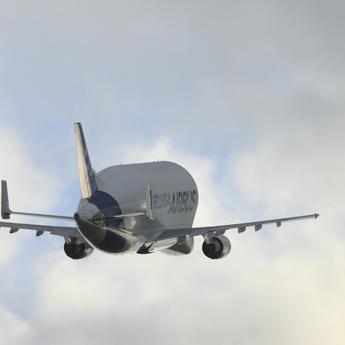
Airbus-built EUTELSAT 36D satellite shipped inside the BelugaST to its launch site
Press Release
Space
-
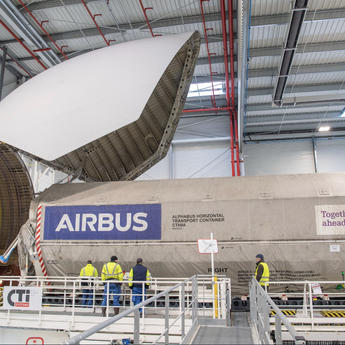
Airbus built Inmarsat-6 F2 satellite arrives on board an Airbus Beluga in Florida…
Press Release
Space
-
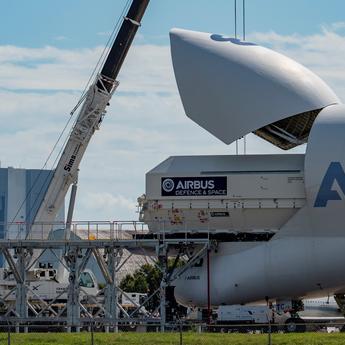
Airbus Beluga delivers Airbus satellite to Kennedy Space Center
Press Release
Space
-
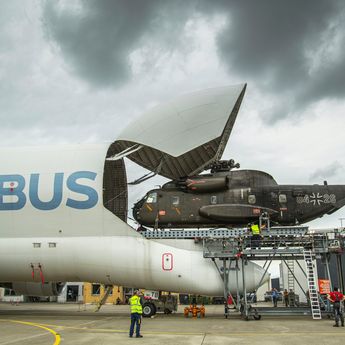
Airbus tests loading system for outsized military cargo on Beluga
Press Release
Defence
